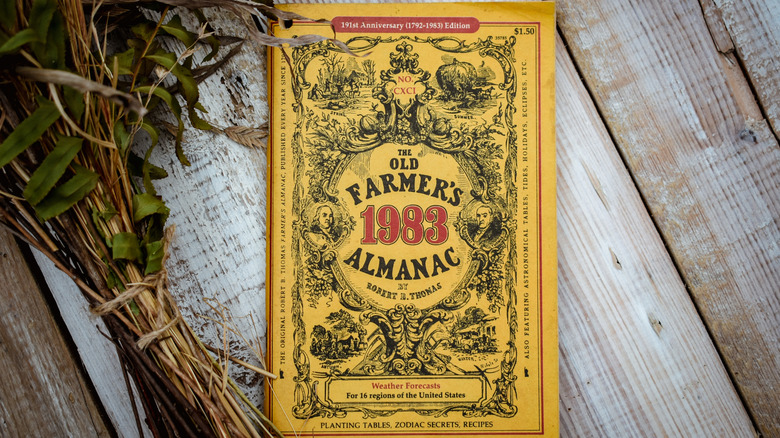Is The Old Farmer's Almanac Ending In 2026? Here's The Truth
The Old Farmer's Almanac began publishing in 1792, during George Washington's tenure as President of the United States — that's a 233-year history, making it the oldest continuously published periodical in North America. Farmers and amateur gardeners alike have consulted The Old Farmer's Almanac for winter weather forecast predictions, planting times and advice, and other crucial information for generations. Today, the publication boasts a U.S. circulation of over 2.5 million copies. So it may have come as a surprise to you if you saw the rumors making the rounds on Reddit and other social media that, after such success, the Old Farmer's Almanac would be shuttering its presses for good in 2026. But fret not — this is a case of mistaken identity. The Old Farmer's Almanac will continue strong into its 234th year. A different publication, Farmers' Almanac, will be ending in 2026.
Although Farmers' Almanac also has a rich history dating back to 1818, Sandi Duncan and Peter Geiger, editor and editor emeritus, respectively, announced on Nov. 6, 2025, that the 2026 edition would be its final printing. "Though the Almanac will no longer be available in print or online, it lives on within you," the editors said in their official statement. In response to the resulting confusion online, The Old Farmer's Almanac released a statement of its own to clarify the situation on Nov. 7, 2025: "Over the years, there has been some confusion between different almanacs, so to be clear: The OLD Farmer's Almanac isn't going anywhere."
The tradition of almanacs and the end of an era for Farmer's Almanac
To understand why there are two similar-sounding publications with such deep historic roots, you have to know a bit about the American tradition of almanacs. Although tracking seasons and celestial events have been distributed by some means or another since time immemorial, the advent of the printing press in the 15th century made these accessible to the common person. In colonial America, the first almanac was published in 1639, but it was Benjamin Franklin's Poor Richard's Almanack, started in 1732, that really popularized the almanac as a household reference. At the time, even this popular publication had many competitors — although they provided a wealth of practical information on how and when to plant garden seeds and more, almanacs were also filled with humor and charming observations, offering necessary enjoyment for long winter nights. Both The Old Farmer's Almanac and Farmers' Almanac later joined this storied tradition.
To avoid any confusion, it bears repeating — The Old Farmer's Almanac, owned by Dublin, New Hampshire-based Yankee Publishing, will continue in 2026. So in the coming year, you'll still be able to consult The Old Farmer's Almanac for information on everything from the lunar calendar to how to grow strawberries from seed. However, Farmers' Almanac, based in Lewiston, Maine, is coming to an end. In a press release, after a 207-year run, Farmers' Almanac attributed the decision to the insurmountable financial pressures of production and distribution in the current media landscape.

